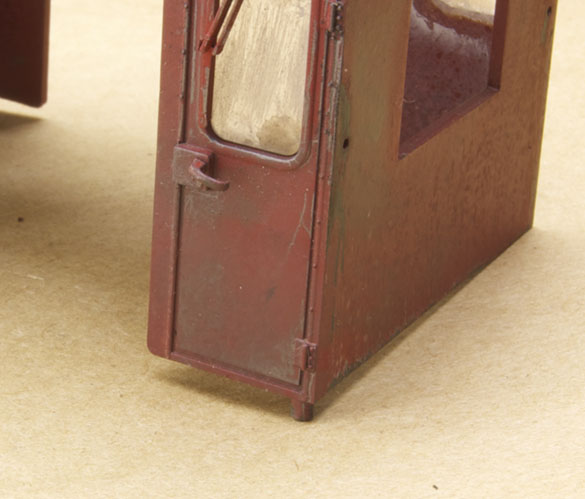Weathering models brings out the best and worst in people. Folks seem to fall into one of two camps: pristine/barely weathered, or the falling apart, rust bucket school that is so popular now.
My hunch is that the pristine/barely weathered crowd is terrified of doing it wrong or of ruining a model by using some method they don’t understand or know how to fix.
Further, I suspect that a few (with emphasis on the word few) of the rust bucket brigade, fall into the trap of weathering stuff for the sake of weathering by piling on technique after technique because they’re so cool. In my view, neither extreme is looking at the real world.
The central theme of my writing encourages you to put away your preconceived ideas, engage in a relentless study of the relevant full-size objects and then simply model what you see. This is harder than it seems but that’s where the true long-term satisfaction of this craft is.
Here’s an example. Left unmaintained, the surface of a frequently used item will get worn because the friction from handling will wear any applied finish down to the base material and that material will get polished and/or discolored over time from abrasion and the buildup of skin oils mixed with dirt and other contaminates.
A door handle is a good example of this. It’s a simple little detail modelers often overlook because it’s so common that it fades into the background of our attention and we cease to notice it.
Work on my GP9 has taken a minor side trip until I find suitable dry transfer (rub on) lettering to finish up the shell. While waiting, I realized I could do some selective weathering that wouldn’t impede the lettering process.
To represent the burnished metal of this door and handle I simply rubbed both with an ordinary #2 office pencil, then buffed gently with paper toweling to get rid of the excess. Some modelers may prefer drybrushed silver paint but I think graphite gives a better impression of bare metal that’s discolored from skin oils.
The graphite suggests the paint on the handle has been worn away from frequent contact by train crews. On the door, I lightly rubbed areas closest to the locomotive body. Why so specific? Because on a full-sized locomotive as the door is swung open, a person would move to their left in order to slip through the narrow opening. If there’s going to be any contact with the door, like rubbing against a work boot, pant leg or jacket because of the tight confines of the diesel walkway, it will be around the latch side of the door. Furthermore, once the cab and body are assembled, this area will be a closed corner, where dirt and other debris tend to collect, adding to the abrasive or staining action on the surrounding surfaces.
Bringing an understanding of such cause and effect relationships to your modeling is the enjoyable and satisfying fruit from your study of the real world. It’s simple to just slop on some rust and dirt colored washes and call it weathering. That’s all some people will ever do and pointing out the resulting lack of realism is likely to earn you their wrath (along with everyone else’s on certain forums).
However, this level of observation is what separates the men from the boys and women from the girls in this craft. When you learn to see and understand such differences, you’ve taken a giant step forward. If you want to learn more, I covered this topic in-depth with Vol. 8 of The Missing Conversation.
Regards,
Mike

0 Comments